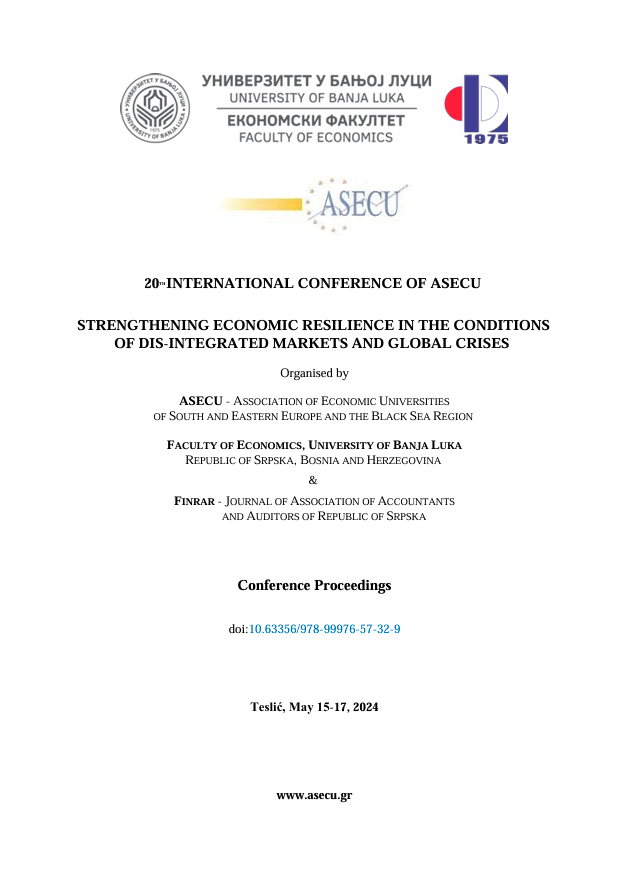MANAGING SUSTAINABLE TECHNIQUES FOR RESILIENT BUSINESS PERFORMANCES: EMPIRICAL EXPERIENCE OF JAPANESE MNC’S
DOI:
https://doi.org/10.63356/978-99976-57-32-9_1Keywords:
Management methods, resilience, business excellence, Japanese MNC’sAbstract
Originating back in January 1981, when the famous management guru Peter Drucker, wrote in the Harvard Business Review the article ‘Behind Japan’s Success’, accompanied by the distinguished best seller in 1984, by Peters and Waterman, ‘In Search of Excellence: Lessons from America’s Best-Run Companies’, the continuous, competitive strive for developing and implementing of management methods, techniques and models, that would increase overall business performances, has proven to possess one of the leading change management roles, in harmonizing the sustainability challenges of economic progress, social stability and environmental circularity, on one hand, with the imperative of increased, dynamic employee capabilities. The illustration of previous capital works reflects the constant orientation for advancing business performances in various dimensions, according to prevalent external and internal pressure on competitiveness and sustainable growth. These tendencies could clearly be seen in the prior thematic topic of the latest World Economic Forum, held in Davos, in January, 2024, ‘Navigating Global Challenges’, which is clearly indicating that the prior economic battle among MNC’s is predominantly international, far more than domestic one, through the concept of ‘human centered management’, especially it’s resilience and agility. While attempting to clear-up the grassroots for increasing national and international competitiveness, Japanese MNC’s have manifested recognizable and wholistic advancements, which are vivid through the achieved degree of resilience and excellence. The developmental process of each Japanese MNC relies on an excessive application of certain Japanese management techniques, like Kaizen, 5S, Amoeba Management etc., which add substantial overall business value. Therefore, the potential for transforming the prevalent business model by applying various Japanese management techniques should be inter-connected to the competitiveness effects that derive from distinctive change management model that generates progressive potential for external adaptation and internal integration. Therefore, modalities for achieving and sustaining business performances constantly change.
References
Process Excellence Network. (2024, April 27). 5 essential attributes of a kaizen leader for 2023. Retrieved from https://www.processexcellencenetwork.com
Kyocera. (2024, April 22). Amoeba management | Management | About Kazuo Inamori. Retrieved from https://www.kyocera.com
Management 3.0. (2024, March 11). Business agility explained. Retrieved from https://www.management30.com
Business Agility Institute. (2023). Business agility report. USA.
Drucker, P. (1981). Behind Japan’s success. Harvard Business Review.
World Economic Forum. (2024, April 26). Global risks report 2024. Retrieved from https://www.weforum.org
Reuters. (2024, April 12). Heard in Davos: What we learned from the WEF in 2024. Retrieved from https://www.reuters.com
Lancaster, J., & Adams, E. (2017). The work of management: A daily path to sustainable improvement. Lean Enterprise Institute Inc.
Laszlo, C. (2005). The sustainable company: How to create lasting value through social and environmental performance. Island Press.
Lepeley, M.-T. (2017). Human centered management: 5 pillars of organizational quality and global sustainability. Greenleaf Publishing Limited.
Peters, T., & Waterman, R. (1984). In search of excellence: Lessons from America’s best-run companies. Warner Books.
United Nations. (n.d.). The 17 goals | Sustainable development. Retrieved from https://www.un.org
Downloads
Published
Issue
Section
License
Copyright (c) 2025 Leonid Nakov, Angelcho Andonovski

This work is licensed under a Creative Commons Attribution-NonCommercial-NoDerivatives 4.0 International License.


